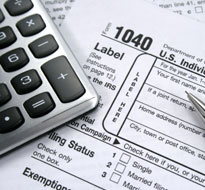Few issues in American politics prompt more partisan passions and conflicting points of view than tax policy. One would think that there would be a definitive historical record of successes and failures that could inform future policy, but since other macro economic trends are operating at the same time, it can be difficult for economists to isolate the impact of tax cuts and hikes independent of these confounding factors.
A 2010 study from the University of California, Berkeley, published in the American Economic Review, “The Macroeconomic Effects of Tax Changes: Estimates Based on a New Measure of Fiscal Shocks,” aims to establish a definitive record of tax cut impacts after World War II independent of significant simultaneous economic trends (or “exogenous” tax changes.) The study uses historical documentation to establish the rationale for, and context around, tax policy shifts, and seeks to “use the information on motivation to separate the legislated tax changes into those that are likely to be contaminated by other developments affecting output, and those that can legitimately be used to measure the macroeconomic effects of tax changes.”
The study’s findings include:
- 54 study examples — slightly more tax cuts than tax hikes — fit the criteria for an exogenous tax policy shift, a “substantial fraction” of all postwar tax changes. Some changes were enacted to help reduce deficits, while others were intended to stimulate long-term growth.
- The “implied effect of a tax increase of one percent of GDP” is “consistently negative,” that is, “tax increases appear to have a very large, sustained, and highly significant negative impact on output.” In the first three quarters that the tax change is in effect, “the effect is small and not significant. It is then steadily and rapidly down for the next two years before rebounding slightly in the final two quarters.”
- As a general rule, “an exogenous tax increase of 1% of GDP lowers real GDP by almost 3%,” though when other factors are taken into consideration, the figure may be more in the range of 2.5%. This contraction happens in part because “investment falls sharply in response to exogenous tax increases.”
- However, the study finds “evidence that tax increases to reduce an inherited budget deficit do not have the large output costs associated with other exogenous tax increases.”
The authors acknowledge that this area of study could be made even more precise: “There are strong reasons to expect the effects of a tax change on output to depend on such features of the change as how far in advance it is expected, its perceived permanence, its impact on marginal tax rates, and how it affects the tax treatment of investment … By systematically gathering information about characteristics of our exogenous tax changes, one could investigate whether the output consequences of tax changes depend not only on their size, but on their other features as well.”
Tags: Congress, economy, taxation, municipal, campaign issue


Expert Commentary